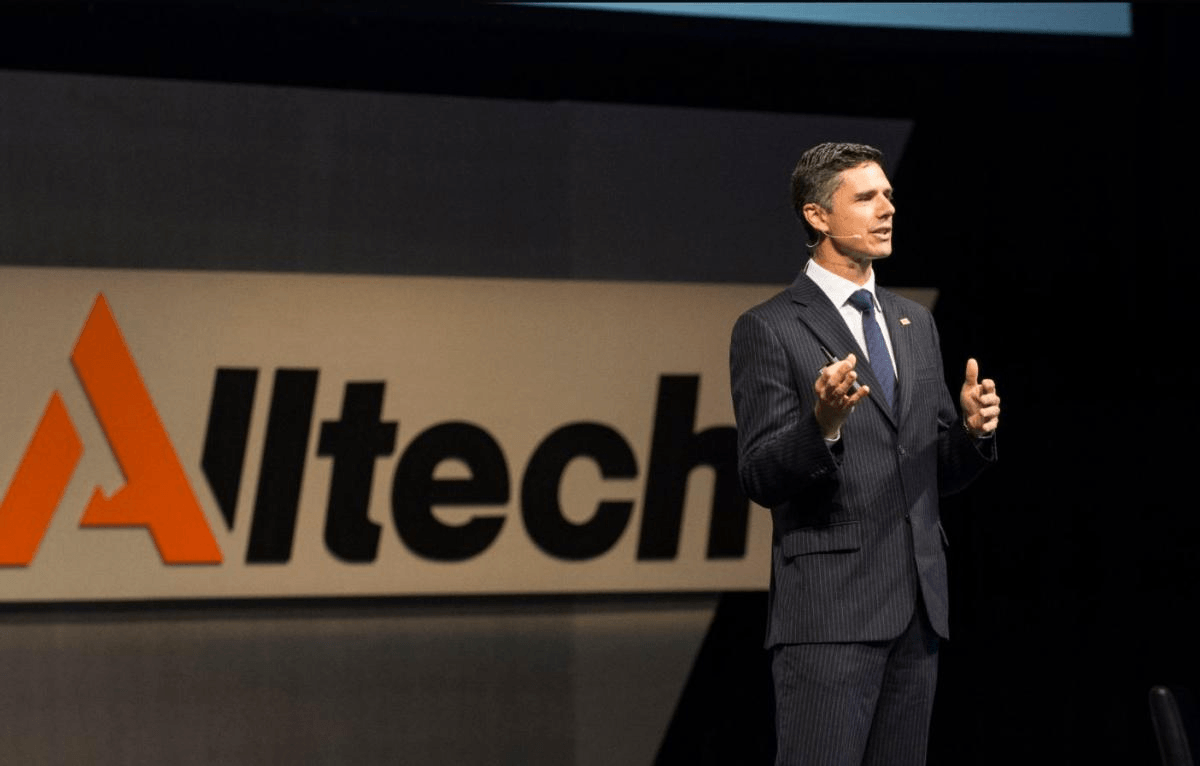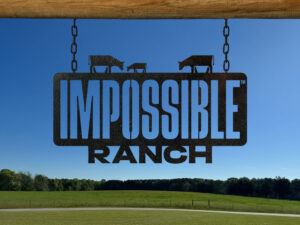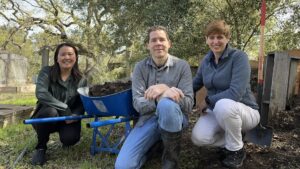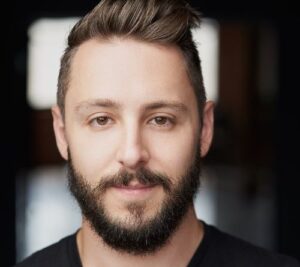Global animal nutrition player Alltech is a senior figure in Ireland’s agricultural industry and in its 37 years has made 14 acquisitions, all since 2011. Most of these were other feed companies across livestock and fish, but they also include an environmental monitoring service E-CO2, and the company’s only Irish acquisition, farm machinery company, Keenan.
Alltech acquired Keenan, a maker of feed wagons, in which animal feed and forage is mixed and then distributed, in April 2016 out of receivership.
It was the first acquisition for Alltech in the farm machinery space and may be the beginning of a new strategy for the company.
We caught up with Keenan’s new CEO Robbie Walker, who took the reigns following the acquisition after 15 years at Alltech at the Irish National Ploughing Championships.
We discussed Alltech’s acquisition strategy, new technologies being brought to bear in animal nutrition, and the progress of The Pearse Lyons Accelerator, which was founded by Alltech’s founder.
Can you explain Alltech’s acquisition strategy? Is the Keenan deal a one-off?
The machinery side may be a bit of a one-off. I think it’s more of an exploratory idea, but the strategy is to purchase companies that provide us with a vehicle to get to the farmer. So we have bought feed mills. They make feed, we can put our ingredients in the feed, and that goes to farms. And the Keenan wagon is literally a vehicle. So everything that goes in the Keenan wagon can come from Alltech or Alltech partners. The strategy is to get closer to the farmer. The machine is designed around cows and farmers. The output of the machine is measured in terms of milk and meat production, as well as feed efficiency, as opposed to other machines which generally are sold in terms of build-quality and engineering.
Keenan was purely an acquisition. And what we have with Keenan is a machinery company but then inside of that, we have an IoT part to it which is a startup within the Keenan group. On the side of the machine we have a box which measures and quantifies whatever is being put into the mixer wagon and then that data get sent via the cloud to a data center. There, they get analyzed using algorithms that figure out whether what the farmer was supposed to have put in the machine is exactly what he did put in the machine. So it’s a comparison of diet formulated versus diet fed: actual versus theoretical.
If it’s out of whack, someone in our call center phones the farmer and talks to him about it, because he could be wasting protein, wasting energy. He could be not putting in enough and not getting enough performance. The other thing it monitors is how long the diet mixes. If he over mixes, it loses all of its structure and that’s not good for the animal’s digestion, which means you get poor performance. So the software detects how long it has been mixing and if it’s been mixing too long, it notifies the farmer.
[I know of ] one farmer who had a 3% error in feeding for over a six-month period. That compounded to a $20,000 per annum wastage. Now a human is never going to detect 3% over or underage, so this makes a big difference.
Do you sell the IoT service separately from the Keenan wagon?
We have started doing that. Now we see that service as a licensing agreement. The farmer signs up for his alerts and he also signs up for nutritional advice. If he has a nutritionist or an advisor, we send the data directly to that person. So when he goes to their farm, he or she can advise the farmer accurately without spending two to three hours analyzing all the data.
Of course, the biggest challenge is trying to monetize that startup because farmers want that for free. Also, should the farmer pay? Because in many cases this will lead the farmer to buy other ingredients like maybe we can highlight that he needs more vitamin E. So someone is going to be selling more vitamin E on the back of this data. There is a big question as to how you monetize these IoT things and at the moment, our big challenge is to see if we can speed that load a little further along the supply chain, because the ability to monitor what animals are given on a feed-by-feed basis not only benefits the farmers but also the company that’s supplying him. It benefits the person that he’s supplying, a dairy or a meat processor, and maybe the supermarket if they want to know the traceability or maybe the consumer. So all of those people have a vested interest in that IoT.
We have relationships for example with McDonald’s, Danone, Sainsbury’s, Tesco’s, and these kinds of people do see the benefit in transparency, traceability, and sustainability. Because if you’re overfeeding energy, protein, the cows will be inefficient. Inefficient means greenhouse gases and carbon footprint, and so there a vested interest for all of these people.
Is Alltech’s acquisition strategy linked to the Pearce Lyons accelerator?
They are somewhat linked. The accelerator strategy was, first of all, to expose our senior managers to the world of innovation. Secondly, we’re a private company, so it was to help out. Helping startups to blaze a trail like Dr. Lyons did. Thirdly, it’s about seeing opportunities because some of those innovations could still work well with Alltech, so they could be acquisition targets for us. But the objective was not necessarily to find acquisition targets. Most of the accelerator companies didn’t want money. They didn’t want to dilute their ownership.
If you look at all the accelerators out there, they tend to offer money and, of course, if you’re a startup and you’ve gone through one, two, or three rounds of funding, by the time you get to the last round you might not own any of your company anymore.
We simply were looking at mentoring them. In terms of quantifiable benefit, the biggest benefit would have been that we introduced them to customers. In the case of [Irish magnetic drift reduction startup] Magrow, we introduced Magrow to companies in California, Texas, Spain, just to name a few. But just looking at the tangible introductions that we made, it’s very conceivable that we introduced them to €1.5 or €2 million in sales. And there is much more in the pipeline. So the benefit to them could be counted in the millions.
And the benefit to Alltech?
Well, we aren’t always looking for benefit in financial terms. First of all, I was a mentor, so I got a lot out of it in terms of seeing what other companies are doing and that helps us see what our strengths are and what their strengths are. So there is a learning experience there. We also got exposed to new ideas and people who could be important in the industry in the future. And we got exposed to innovations that perhaps we should consider acquiring.
Now, none of those have really come to fruition but it has just happened. The accelerator finished in May at [ ONE: The Alltech Ideas Conference]. We had 196 companies. We whittled that down to 10. We put them on the stage at the conference which had 4,000 people attending. We polished up their pitch and their business plan, and what we found generally with most of them is that where they fall down is in their salesmanship. They weren’t great at selling. They have great ideas and were good on the IP and all that stuff, but in the end, you need to be able to sell whatever you’re making.

















Sponsored
International Fresh Produce Association launches year 3 of its produce accelerator